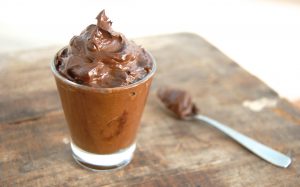 Is carob a healthy chocolate alternative or is that just another marketing ploy to sell more carob? It’s often hard to separate fact from fiction in today’s marketplace, since advertising has promoting their product sales down to a science. Let’s take a look at all the benefits that carob has to offer, but also include some of the benefits of eating healthy chocolate—the darker kind. First, carob contains no caffeine or theobromine, another stimulant. Unlike caffeine that primarily works on the nervous system, theobromine affects your pulmonary and cardiovascular system. It can affect sensitive people and prove lethal to dogs and can cause fibroid tumors in humans.
Is carob a healthy chocolate alternative or is that just another marketing ploy to sell more carob? It’s often hard to separate fact from fiction in today’s marketplace, since advertising has promoting their product sales down to a science. Let’s take a look at all the benefits that carob has to offer, but also include some of the benefits of eating healthy chocolate—the darker kind. First, carob contains no caffeine or theobromine, another stimulant. Unlike caffeine that primarily works on the nervous system, theobromine affects your pulmonary and cardiovascular system. It can affect sensitive people and prove lethal to dogs and can cause fibroid tumors in humans.
Carob is naturally sweet.
If you’ve ever made the mistake of chomping down on a hunk of baker’s chocolate, the kind that has no sweetener added, you probably wore that scowl on your face that the bitter chocolate created for quite a while. Oil, cream and sugar are added to make it smooth and more palatable, but it also makes it far less healthy. One reason for the oils and milk or cream is to create a smooth, less grainy texture. Carob is both naturally sweet with a smooth texture that doesn’t require the extra additives.
You might not like chocolate if you watched the processing at the source.
Sure when you see the chocolate final product, it came from the clean sanitized factories locally. It doesn’t start out that way, however. Chocolate is fermented to get the chocolaty flavor we all love. To do that, it’s heaped on the ground in piles. Not only are there bugs flourishing in the area, there are dogs running loose who choose those piles as their personal urinal. The chocolate heats as it ferments, just as compost piles do. It releases moisture and the combination is a perfect setting for mold and bacteria to grow. Cancer-causing agents, aflatoxins, which occur with the molding now are in the cocoa beans. The processing of carob is quite different and doesn’t require fermentation.
People have eaten carob for centuries.
Carob, also known as St. John’s bread and locust, has a prominent place in the Bible and throughout history. The bean can be eaten raw or dried and ground for other purposes. While the nutrient value varies by the variety of carob, all contain a multitude of mnerals, which include magnesium, zinc, copper and more. Carob is a significant source of iron, potassium and calcium, too and it has an alkalizing effect for the body. It provides vitamins K, E, C and A, while also providing protein and a healthy ration of Omega-6 to Omega-3 fatty acids.
– Carob is rich in antioxidants that can boost the immune system and help fight environmental toxins.
– Carob may help lower cholesterol and can be used as a digestive aid. Chocolate, on the other hand, is one culprit that may trigger the digestive problem GERD.
– You can use carob in a number of ways from eating the fresh pods to roasting it. You’ll often find carob powders in the grocery, but be aware these may have commercial
additives.
– Dark chocolate does have many health benefits, too. It’s rich in nutrients and antioxidants, plus may lower blood pressure, raise good cholesterol levels, prevent plaque build up and prevent heart disease. It’s also good for the brain and skin.
